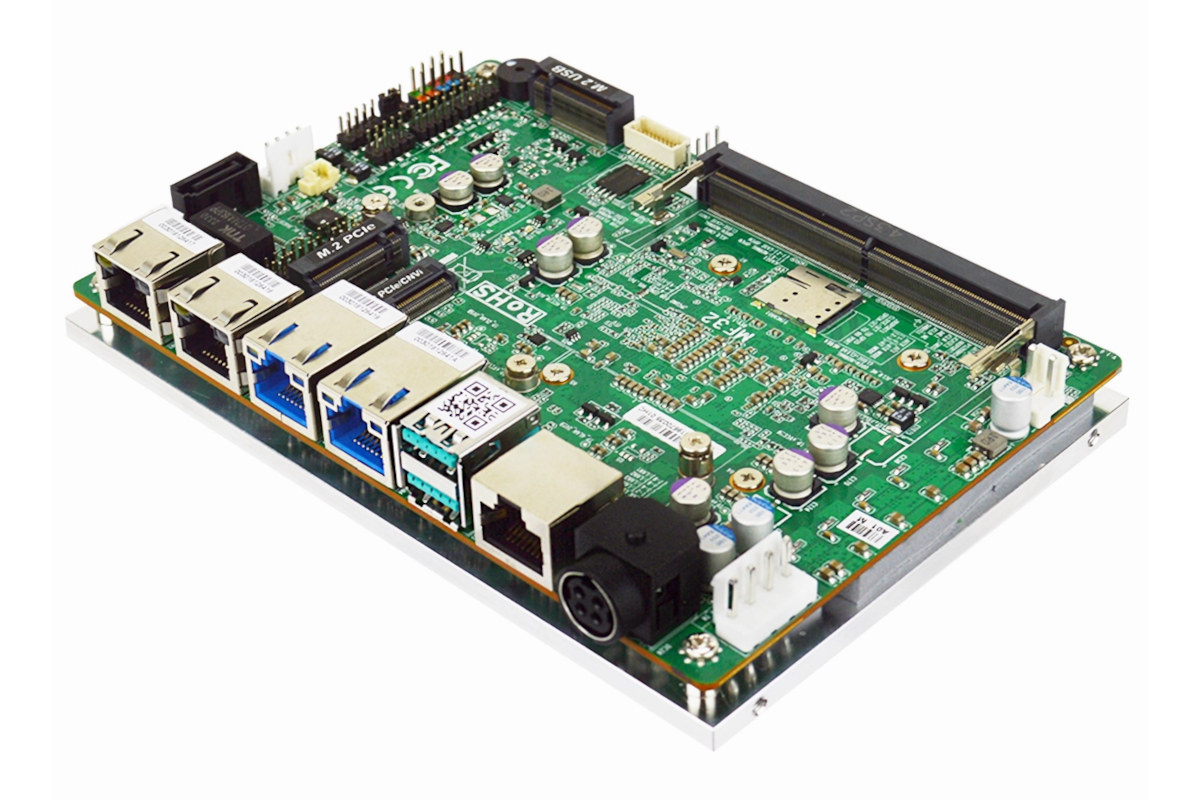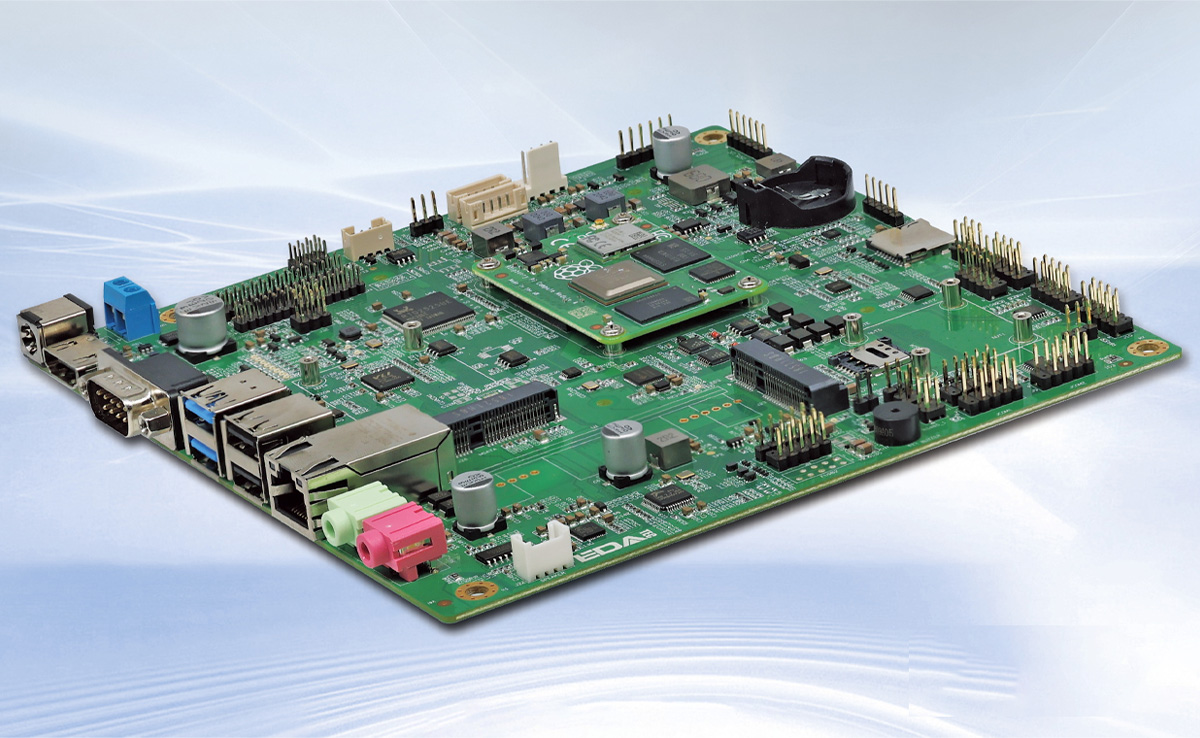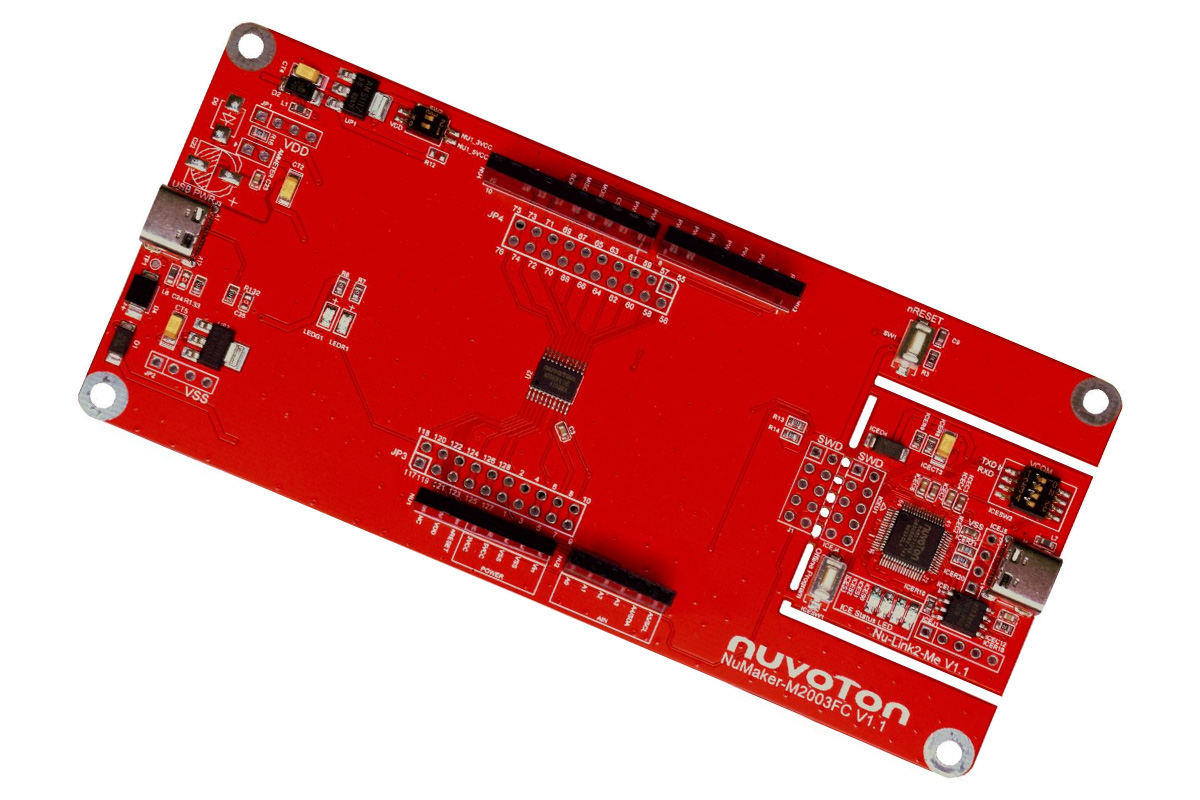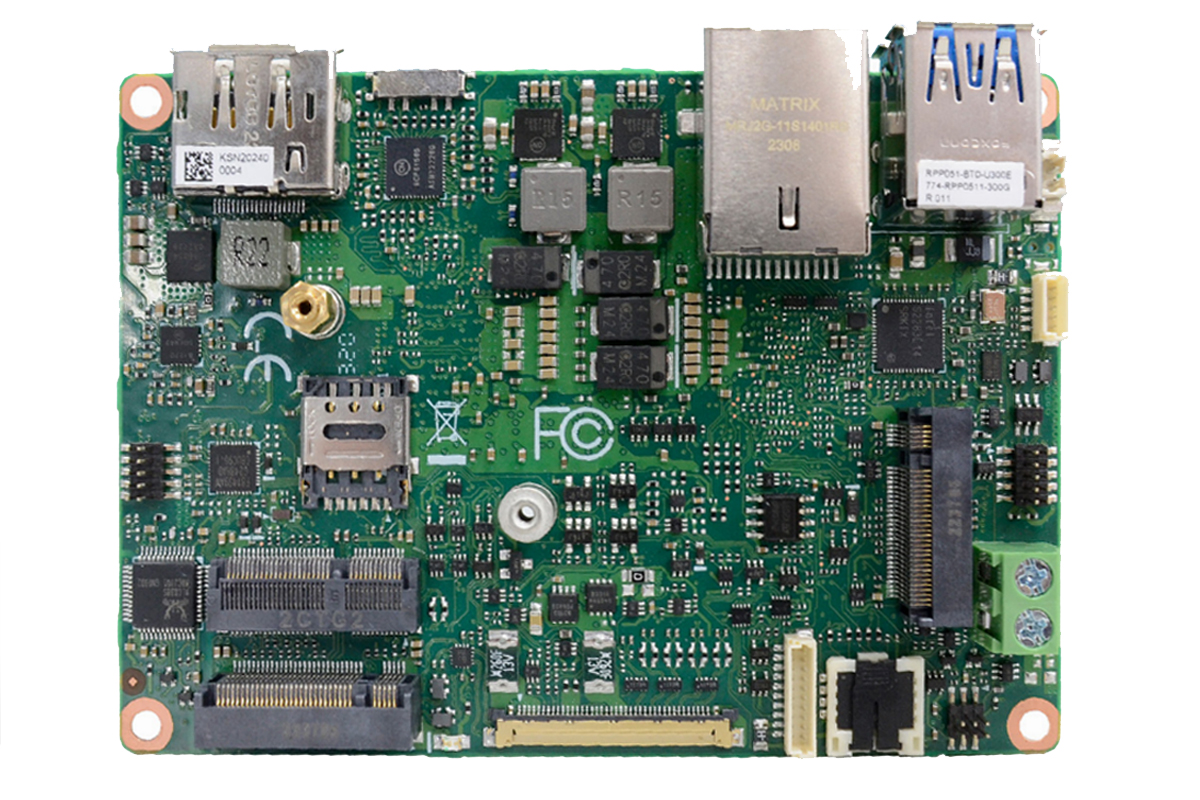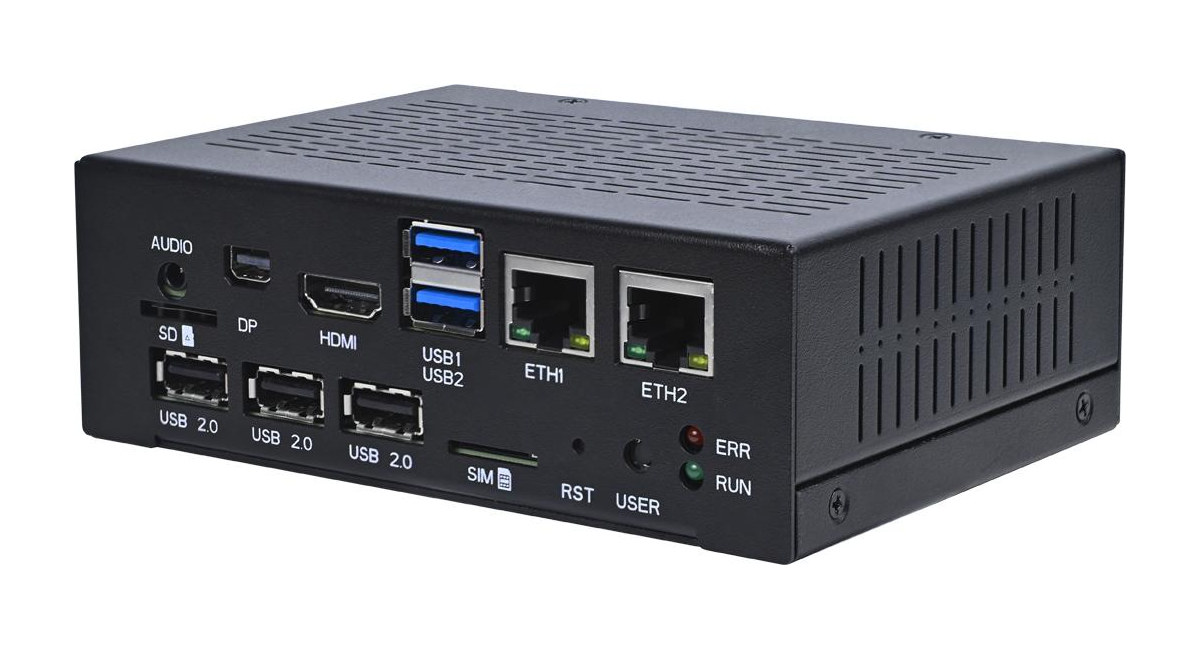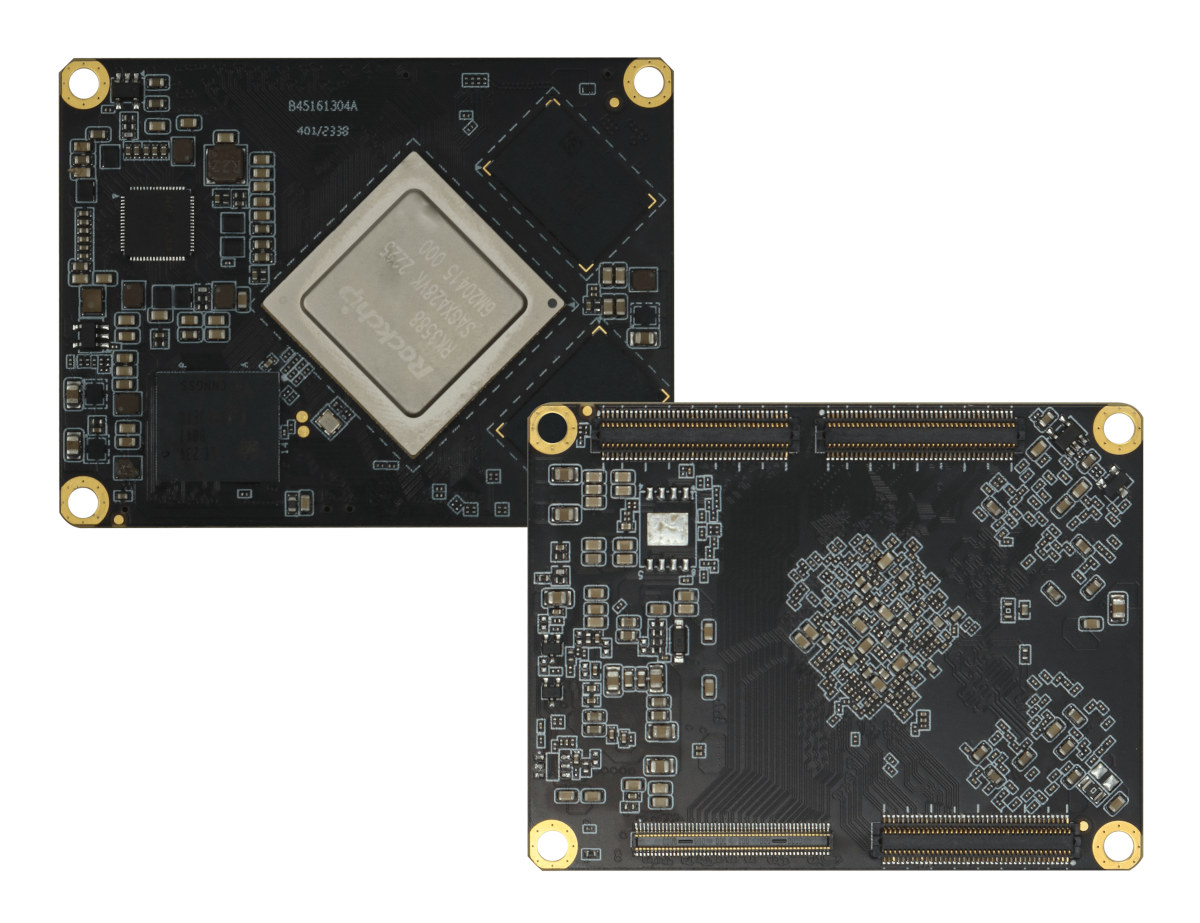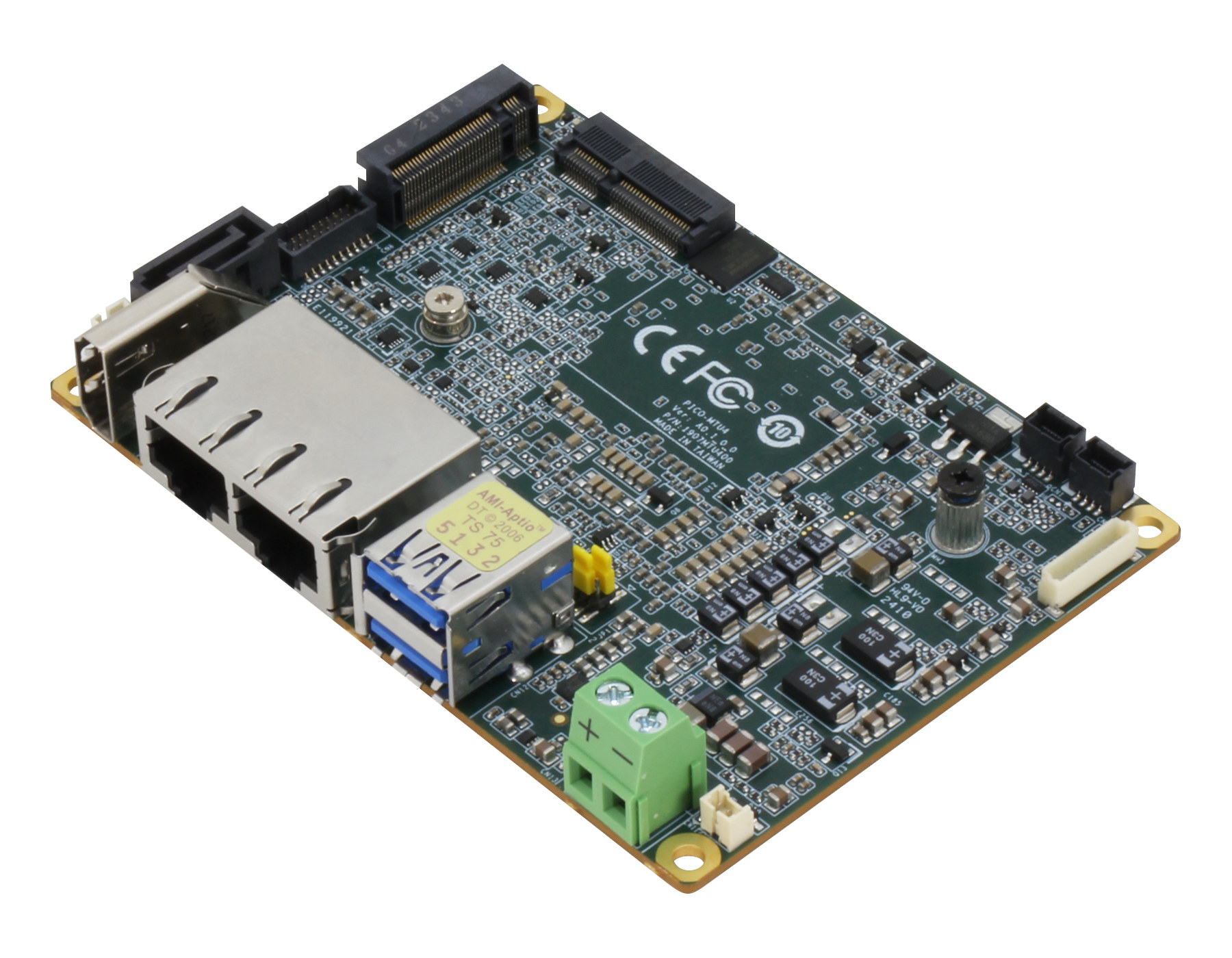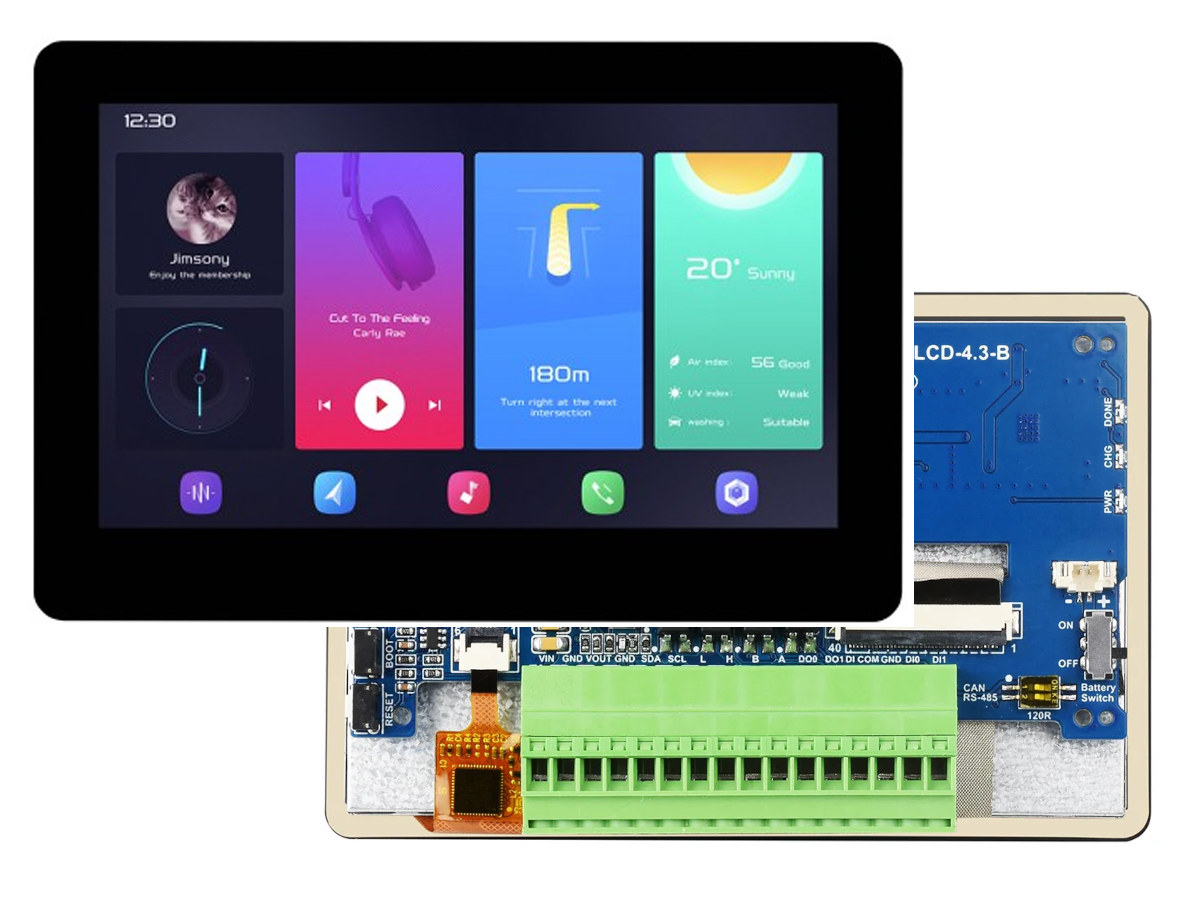Jetway MF32 is a 3.5-inch single-board computer (SBC) offered with either an Intel 13th Gen Core i5-1335UE or an Intel Processor U300. It includes four Intel 2.5GbE LAN ports and optional dual PoE with a max output of 40W. The board supports up to 32GB of DDR5 memory, offers various M.2 expansion slots, and comes with a Nano SIM card slot. This board can be used in networking devices, edge computing, IoT projects, digital surveillance, etc… Jetway offers four variants of their MF32 SBC: The MF32-133E0 and MF32-133E2 models are equipped with the Intel Core i5-1335UE processor, while the MF32-300U0 and MF32-300U2 feature the Intel Processor U300. It’s important to note that the MF32-133E0 and MF32-300U0 do not include TPM 2.0 (dTPM) security features. Jetway is well known for its SBCs, and we’ve previously covered its products like the JMTX-ADN8, JNUC-ADN1 mini-ITX motherboard, and JF35-ADN1 3.5-inch motherboard, all featuring the […]
EDATEC ED-SBC2300 – A Raspberry Pi CM4-powered industrial Mini-ITX motherboard
The EDATEC ED-SBC2300 is an industrial mini-ITX motherboard built around the Raspberry Pi CM4. The motherboard offers various storage options including eMMC flash, microSD card, and mSATA SSD. It supports dual displays (HDMI + LVDS or HDMI + eDP with touchscreen), offers diverse connectivity with USB, GbE port, RS232, RS485, and GPIO, and boasts integrated security features like RTC, EEPROM, and crypto authentication. The board supports a wide 9V-36V DC power input and PoE is also an option through an add-on board. With its compact size, flexible I/O, and industrial-grade features, the ED-SBC2300 series suits applications like kiosks, digital signage, industrial automation, and IoT devices. Previously we have written about similar products from EDATEC including the RPI CM4-based industrial computer, the EDATEC ED-HMI2320-156C fanless panel PC, and the EDATEC ED-HMI2120-101C, also an industrial panel PC with an 10.1-inch capacitive touchscreen. Feel free to check those out if you are interested […]
Nuvoton M2003 is a low-cost Arm Cortex-M23 MCU for AIoT and Industrial applications
Nuvoton has recently launched the Nuvoton M2003 series of low-cost Arm Cortex-M23 microcontrollers which at the time of writing features M2003FC1AE and M2003XC1AE microcontrollers. Major features include a 32-bit hardware multiplier/divider, 32 KB of flash memory, 4 KB of SRAM, multiple communication interfaces (UARTs, I²C, USCI), analog peripherals (8-channel 12-bit ADC, 6-channel 16-bit PWM), and support for a wide voltage and temperature range. These features make this device useful for AIoT, industrial automation, smart homes, energy storage, and automotive electronics, and the company says the low-cost M2003 family offers a migration path from 8-bit to 32-bit designs. Feature-wise both the MCUs are the same and the only difference is in their package. The M2003FC1AE comes in a TSSOP20 package, whereas the M2003XC1AE comes in a QFN20 (3x3mm) package. The NuMaker-M2003FC development board is also offered for evaluation. Nuvoton M2003 series MCU specifications Device – Nuvoton M2003 series of MCUs M2003FC1AE […]
DFI RPP051 Pico-ITX SBC features 13th Gen Intel Core embedded SoC from Processor U300E to Intel Core i7-1365UE
DFI RPP051 is a 2.5-inch Pico-ITX SBC built around 13th Gen Intel Core processors ranging from the dual-core Intel Processor U300E to the 10-core Intel Core i7-1365UE. It supports up to 32GB DDR5 SO-DIMM memory and accommodates M.2 NVMe and SATA storage devices. Connectivity options include a 2.5GbE LAN port, DP++ and eDP display interfaces, USB 3.2 Gen 2 and USB 2.0 ports, RS-232/422/485 interfaces, along with I2C and GPIO for expansion. The DFI RPP051 first came to our attention while covering the AAEON PICO-RAP4 which is also an SBC with a Pico-ITX form factor, we have also written about many x86 and Arm Pico-ITX boards including AAEON PICO-MTU4, the AAEON RICO-3568, the GIGAIPC PICO-N97A and many other feel free to check them out if you are looking for compact and powerful SBCs. DFI RPP051 Pico-ITX SBC Specification 13th gen Raptor Lake SoC (one or the other) Intel Core i7-1365UE 10C/12T […]
Rockchip RK3568 fanless industrial PC offers Ethernet, 4G LTE, WiFi, BLE connectivity, RS485, RS232, and CAN Bus interfaces
MYiR MYD-LR3568-GK-B is a fanless industrial PC Box powered by Rockchip RK3568 quad-core Cortex-A55 Ai SoC with up to 4GB RAM, 32GB GB eMMC flash, support for M.2 NVMe storage, and communication interfaces such as RS232, RS485, and CAN Bus. The device also offers dual gigabit Ethernet and optional WiFI, BLE, and 4G LTE connectivity, two video outputs, and five USB ports with a set of features and capabilities that makes it suitable for edge AI, video analytics, industrial control, protocol conversion, communication management, and more. MYiR MYD-LR3568-GK-B specifications: SoC – Rockchip RK3568J CPU – Quad-core Cortex-A55 processor at up to 1.4 GHz (An “overdrive” version at 1.8 GHz is available upon request) GPU – Mali G52 2EE GPU with support for OpenGL ES 1.1/2.0/3.2, OpenCL 2.0, Vulkan 1.1 VPU 4Kp60 H.264, H.265, VP9, 1080p60 MPEG-4/-2/-1, VP8, and VC1 video decoder 1080p60 H.264/H.265 video encoder AI accelerator – Up to […]
Dusun DSOM-042R is a Rockchip RK3588M system-on-module for “automotive AIoT” applications
Dusun DSOM-042R is a system-on-module based on Rockchip RK3588M automotive-grade AI SoC with 8GB RAM and 128GB eMMC flash, capable of operating in the -40°C to 85°C temperature range, and fitted with four high-density connected exposes the many interfaces from the octa-core Cortex-A76/A55 processor. We first found out about the RK3588M SoC last year with the Firefly AIO-3588MQ board also comprised of a system-on-module and carrier board with support for up to sixteen cameras and up to six Full HD displays to drive the car dashboard, in-vehicle infotainment, a digital rearview mirror, headrest monitors, ADAS system, and more. We hadn’t noticed other manufacturers launch a product with the automotive-grade RK3588M, and the DusunIoT DSOM-042R offers another option. Dusun RK3588M SoM specifications: SoC – Rockchip RK3588M octa-core processor with CPU – 4x Cortex-A76 cores @ up to 2.1 GHz, 4x Cortex-A55 cores @ up to 1.7 GHz (frequencies TBC) GPU – […]
AAEON PICO-MTU4 Pico-ITX SBC features Intel Core Ultra 5/7 “Meteor Lake” SoC
The AAEON PICO-MTU4 Pico-ITX SBC may be the world’s smallest platform based on 14th Gen Intel Core Ultra 5/7 SoCs part of the Meteor Lake-U family and follows the company’s UP Xtreme i14 SBC introduced a couple of months ago with the same processors, although the new model is limited to 15W parts due to its small size (100x72mm). The Core Ultra 5/7 Pico-ITX SBC comes with up to 64GB DDR5 memory, supports NVMe and SATA storage, offers 2.5GbE and GbE networking, M.2 Key-M and Key-E sockets for storage or/and wireless expansion, dual display support through HDMI and eDP, a few USB interfaces, and two RS232/RS422/RS485 interfaces. AAEON PICO-MTU4 specifications: Meteor Lake-U SoC (one of the other) Intel Core Ultra 7 165U 12-core (2P+8E+2LPE) processor @ 1.7 / 4.9 GHz with 12MB cache, Intel 4Xe LPG graphics @ 2.0 GHz, Intel AI Boost NPU; TDP: 15W Intel Core Ultra 7 […]
4.3-inch ESP32-S3 wireless touchscreen display features terminal block with RS485, CAN Bus, I2C, DIO
Waveshare “ESP32-S3-Touch-LCD-4.3B” is a capacitive touch display development board built around an ESP32-S3 SoC with RS485, CAN Bus, I2C, and isolated DIO interfaces provided through a terminal block. The devkit features a 4.3-inch capacitive touch display that has an 800×480 resolution, RTC, and a microSD card slot. Combined with a wide input voltage range of 7-36V DC, the ESP32-S3-Touch-LCD-4.3V is suitable for IoT HMI, smart home automation, and more. Previously we have written about similar development boards from Waveshare like the ESP32-S3 1.69-inch touch display, the $15 Waveshare 1.69-inch IPS touch LCD module, the Waveshare RP2040-LCD-0.99-B rounded display but they would offer no expansion pins or GPIO through pads or 4-pin connectors, while the ESP32-S3 display features a terminal block with additional interfaces like RS485 pr CAN Bus that should make wiring more convenient and versatile for the target applications. Waveshare ESP32-S3 touch LCD specifications: Wireless MCU – Espressif Systems ESP32-S3R8 […]


